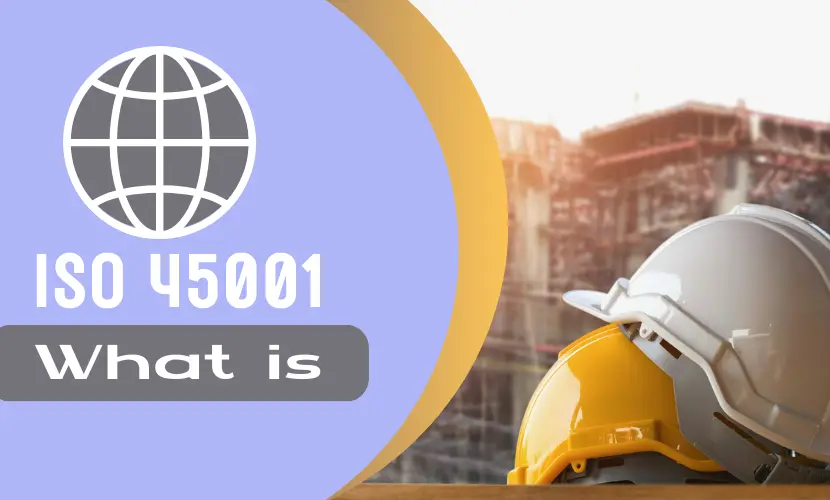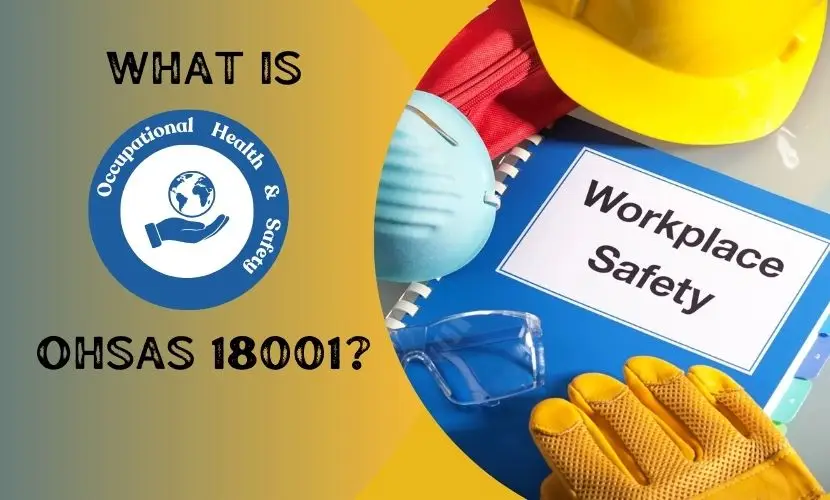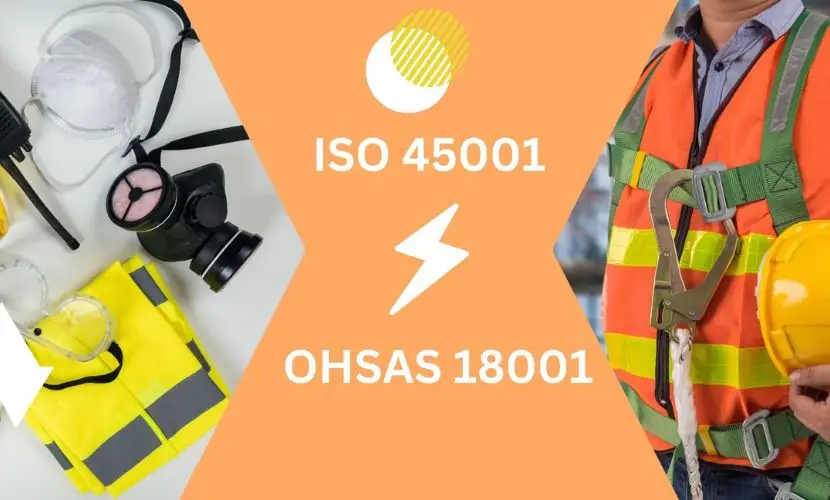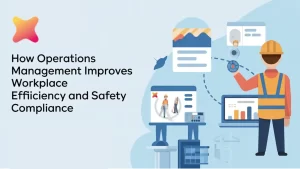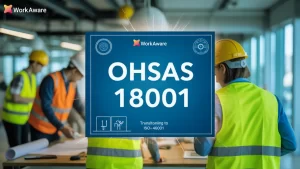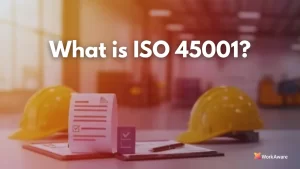ISO 45001 vs OHSAS 18001: What’s the Difference in Safety Standards?
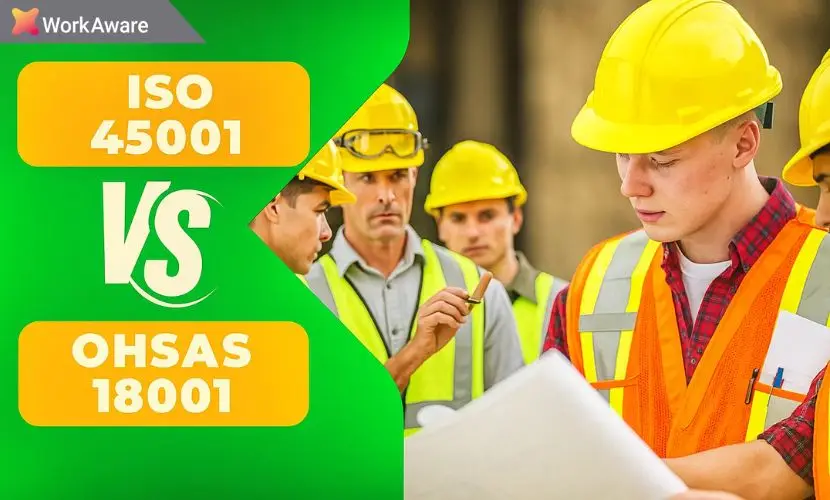
For years, OHSAS 18001 served as the benchmark for occupational health and safety management. But in 2018, the International Organization for Standardization introduced ISO 45001, a new global standard that not only replaced OHSAS 18001 but also expanded its scope. While both aim to reduce workplace risks and protect employees, ISO 45001 takes a more proactive, risk-based approach, aligning with other safety management systems. In this guide, we’ll break down the key differences between ISO 45001 and OHSAS 18001, why the transition matters, and how businesses can benefit from adopting the latest standard.
This article will explore the following topics:
- What is ISO 45001?
- What is OHSAS 18001?
- What’s the Difference Between ISO 45001 vs. OHSAS 18001?
- Transitioning from OHSAS 18001 to ISO 45001: What You Need to Know
- What are the Core Elements of ISO 45001 Management Systems?
- What Does OSHA Stand For?
- Why ISO 45001 Matters Today
- The Bottom Line
- FAQs – ISO 45001 & OHSAS 18001
What is ISO 45001?
The ISO 45001 is an occupational health and safety management system (OHSMS) designed as the world standard for workplace health and safety. It helps prevent workers and visitors from accidents by proactively preventing risks.
This standard does more than set the ultimate goal of helping businesses ensure a safe, healthy working environment. It’s primarily geared towards middle and senior management, providing a unified framework that all companies can draw on.
Here are a few of its key benefits:
1. Improved Safety Performance
The ISO 45001 provides a comprehensive and proactive framework for assessing health and safety risks. Using this standard, organizations can improve their safety record and reduce potential injuries, accidents, and illnesses.
2. Legal Compliance
Following international standards can help organizations stay updated on the most relevant health and safety regulations. The ISO 45001 helps companies remain compliant, where non-compliance can lead to legal consequences.
3. Reduced Workplace Incidents
The ISO standard 45001 takes a proactive approach to identifying and addressing potential hazards. When these issues are addressed early, organizations lower downtime and insurance costs, and boost productivity.
4. Global Recognition
The ISO 45001 provides a common framework for health and safety management. Certification can attract investors, open up new opportunities, and even facilitate new business ventures more smoothly.
5. Ongoing Improvement
The ISO 45001 helps organizations adapt to changing circumstances with regular monitoring, evaluation, and updating. The standard offers a framework for managers to stay adaptable and proactive in managing risks.
What is OHSAS 18001?
Before ISO 45001, OHSAS (Occupational Health and Safety Assessment Series) 18001 provided a workplace health and safety management framework. Its coverage also included risk management and legal compliance.
Developed by the British Standards Institute, OHSAS 18001 mainly focused on reactive hazard control. It was the first part of the 18000 systems standard series launched in March 1999.
18001 was the first part of two specifications. It provided the health and safety management system requirements, while 18002 provided implementation guidelines.
However, this workplace safety certification has since been superseded by the ISO 45001 in 2018 and withdrawn in 2021. Organizations can no longer apply for 18001 certification.
What’s the Difference Between ISO 45001 vs OHSAS 18001?
ISO 45001 and OHSAS 18001 have many similarities. Being the most common management systems worldwide, they share concepts like risk management and creating a safe work environment.
However, they also differ in many ways. The main difference between the two is their approach towards risk management. ISO 45001 focuses on proactive evaluation and risk management, while OHSAS 18001 focuses solely on reactive hazard control.
Here are the other differences between the two:
| Feature | ISO 45001 | OHSAS 18001 |
| Focus | Risk prevention | Hazard control |
| Structure | Annex SL (same as ISO 9001/14001) | Standalone Framework |
| Third-Party Involvement | Consider the needs and expectations of interested parties (workers, contractors, suppliers & visitors) | Focused mainly on internal hazards, minimal external input |
| Certification Status | Active | Withdrawn in 2021 |
| Approach To Implementation | Process-driven | Procedure-driven |
Transitioning from OHSAS 18001 to ISO 45001: What You Need to Know
If your organization received OHSAS certification, you likely have also had to complete the 45001 certification during the transition.
However, while both standards are concerned with improving workplace health and safety, they have key differences. For instance, the current 45001 was designed to account for other existing standards, especially 18001.
Other differences include the roles of top management, an emphasis on health and safety culture, and structured planning. On top of that, 45001 is more flexible and incorporates mental health requirements to ensure teams’ well-being.
Here’s everything you need to know when transitioning from OHSAS 18001 to ISO 45001:
1. Step-by-Step Process
Businesses looking to uphold practical safety standards can pursue a 45001 workplace safety certification. In a nutshell, the whole process for ISO 45001 certification is as follows:
- Complete Pre-assessment – Pre-assessments are an optional step that allows businesses to identify areas of improvement. Companies can perform internal pre-assessments or hire third-party consultants.
- Undergo a Certification Audit – An ISO committee examines worksite conditions and consults with management and employees. After this step, they create a report that identifies any instances of non-compliance.
- Obtain a Certificate of Registration – The ISO committee can reject a certification if they find too many non-compliant items. If they don’t, the business enters an international database of certified organizations.
- Pass Recertification – 45001 certification is only valid for three years. After that, businesses must undergo an audit to renew their certification.
2. Challenges and Tips
Obtaining ISO certification for health and safety isn’t always straightforward. Many organizations face various challenges that can drastically affect the outcome.
However, recognizing these barriers early can help you and your organization avoid costly delays. Here are the biggest challenges to getting ISO-certified and how you can overcome them:
- Lack of Leadership Commitment – Senior management must actively prioritize ISO certification rather than see it as a compliance task. A considerable part of it lies in communicating how it supports overall business goals.
- Lack of Understanding – Management needs to have a clear grasp of the standard’s implementation process. You need a clear, working knowledge of the system’s structure and what each clause requires.
- Lack of Worker Awareness – Clear communication ensures that frontline staff thoroughly understand OHSMS standards. Clause 7 requires organizations to provide awareness at all levels.
- Lack of Resources – Well-planned strategies make it easier for managers to develop a clear roadmap. This roadmap reflects the right level of commitment and resourcing at every stage.
- Lack of Documentation – Your organization’s ISO strategy must include what each standard clause needs. Templates and digital systems help keep this information organized.
- Lack of Training – You must ensure that training is role-specific and consistent at all levels. Digital tools are essential for managing training records and tracking compliance.
- Lack of Proper Expectations – ISO certification for health and safety is not a one-off project, but an ongoing process. Successful management systems have built-in routine evaluations for this purpose.
3. Documenting Your Processes
Organizations develop procedures for risk assessment, hazard identification, and documentation control. You should especially pay attention to documentation when following ISO certification for health and safety.
ISO standards can do several things for a business, particularly showing organizational assets, processes, and documents. These are essential not just in documentation, but also for conducting audits.
That said, the scope of documentation needed for your business can vary based on various factors, such as:
- Organizational Size and Scope
- Interactions and Interdependence of Processes
- Individual Capability
4. Suggested Timelines
Before getting certified, you must first develop and evaluate your production process. Here is a basic roadmap to help you get started on your ISO certification goals:
- Understand OHS Systems and ISO 45001 – The first step to implementation is to understand these systems and what they mean for your business.
- Do Your Research – Implementing ISO certification for health and safety can lead to organization-wide changes. The best way to determine your priorities is by examining your current systems and engaging stakeholders.
- Determine Your Priorities – With the information gathered, you can start determining your health and safety management system priorities.
- Develop and Implement Your System – Ensure that employees are trained properly on their tasks. Reporting systems must cover inspection, testing, and corrective actions, and so on.
- Conduct Regular Audits – Scheduled audits are crucial in assessing your management systems. They can help you find windows for improvement to ensure comprehensive coverage and implementation.
What are the Core Elements of an ISO 45001 Management System?
Whether your organization operates in oil and gas, manufacturing, or construction, achieving ISO certification shows a commitment to safety management.
This commitment is also reflected in its framework, which is more than a compliance checkbox for best standards and practices. Here are the main parts of an effective occupational health and safety management system:
1. Risk Identification and Assessment
Standard hazard identification and assessment procedures form the backbone of an effective OHSMS. 45001 not only requires these procedures, but also procedures for determining appropriate control and prevention.
2. Operational Planning and Emergency Preparedness
Routine and non-routine operations form another part of an effective OHSMS. These include potential emergency measures to ensure workers are trained to respond to all scenarios.
3. Leader and Worker Participation
Middle and senior managers and CEOs must show consistent leadership and accountability. On top of that, ISO 45001 also emphasizes workers’ active participation across all levels.
4. Monitoring and Auditing
Ongoing improvements in safety performance come as a result of data-driven decisions. These decisions result from regular audits, management reviews, and corrective actions.
What Does OSHA Abbreviation Stand For?
OSHA stands for Occupational Safety and Health Administration. It is a US-based organization that sets workplace health and safety standards and has authority throughout the United States.
OSHA mainly enforces standards for businesses based on research and feedback, ranging from safety regulations to hazard reporting.
While OSHA guidelines and requirements complement ISO and OSHAS, they’re not the same as international workplace safety certification. OSHA regulations are often mandatory and legal requirements that organizations must follow.
Why ISO 45001 Matters Today
In 2018, the International Standardization Organization created ISO 45001 to help improve workers’ health and safety. ISO 45001’s introduction has since brought significant changes to workplaces worldwide.
Today, 45001 presents a gold standard that organizations should aspire to. Leaders, especially senior managers and CEOs, should ideally establish their occupational health and safety management system based on this standard.
See Also: What is Safety Management System (SMS)?
There are other reasons why this standard matters today, such as:
1. Aligns with other ISO standards
45001 is the first unified global OHS standard. It offers businesses a comprehensive roadmap and tools to identify and manage risks proactively.
One of 45001’s many benefits is its integration with other ISO standards. Two examples are ISOs 9001 and 14001, which relate to quality and environmental management, respectively.
With 45001, other systems are not considered separate, but interdependent systems that can merge seamlessly. Similar processes across different systems can be executed and managed without duplication.
2. Recommended by Clients, Insurers, or Governments
Clients and insurers often recommend ISO certification. For clients, an ISO-certified business is a sign of commitment towards ensuring workers’ health and safety and smooth business operations.
Insurers also recommend ISO certification to maximize revenue while minimizing potential costs. Fewer insurance claims are often the result of fewer work-related accidents, injuries, and diseases.
Additionally, OHSMS standards vary by country. Government agencies have different standards for workplace health and safety management. An ISO-certified business shows commitment towards legal compliance and quality.
3. Enhances Corporate Reputation and Employee Morale
Another benefit of ISO certification is improved corporate reputation. ISO-certified businesses leave a strong first impression on clients, insurers, and investors.
On top of that, worker training and education on health and safety procedures drastically boost morale. It shows a business’s commitment towards its workers, reducing absenteeism.
The Bottom Line
The shift from OHSAS 18001 to ISO 45001 significantly changed industries worldwide. To achieve workplace safety certification, businesses are encouraged to be more proactive in compliance and risk prevention.
By staying committed to the ongoing process, businesses not only take steps to ensure worker health and safety. They also ensure transparency in their regular operations and unlock more opportunities with potential clients.
To learn more about getting ISO-certified, download our ISO 45001 Readiness Checklist and explore our Compliance Tools today.
FAQs – ISO 45001 & OHSAS 18001
Find quick answers to the most asked questions about ISO 45001 and OHSAS 18001.
What is the difference between ISO 45001 and OHSAS 18001?
ISO 45001 is the globally recognized standard for workplace health and safety that has replaced the older OHSAS 18001 framework. Unlike OHSAS 18001, ISO 45001 follows a risk-based approach, integrates easily with other ISO standards, and emphasizes worker participation and leadership commitment.
Is the OHSAS 18001 still valid?
No. OHSAS 18001 was officially withdrawn in 2021 and is no longer valid; organizations must transition to ISO 45001.
Has 45001 replaced 18001?
Yes. ISO 45001 fully replaced OHSAS 18001 as the international standard for occupational health and safety.
Who needs ISO 45001 certification?
Any organization that wants to improve workplace safety, reduce risks, and demonstrate compliance with international health and safety standards can benefit from ISO 45001 certification. it supports businesses that aim to build a strong safety culture.
How does OHSAS relate to ISO 45001?
OHSAS 18001 was the predecessor to ISO 45001. ISO 45001 builds on it with a risk-based, proactive approach and global recognition.
When did ISO 45001 replace OHSAS 18001?
ISO 45001 replaced OHSAS 18001 in March 2021 after a three-year migration period.
Is OHSAS 18001 a legal requirement?
No. OHSAS 18001 was a voluntary standard, not a legal requirement. ISO 45001 also follows the same principle.
Who needs OHSAS 18001 certification?
No one anymore. Organizations previously certified to OHSAS 18001 had to migrate to ISO 45001 to maintain compliance.
What are the 10 clauses of ISO 45001?
The 10 clauses are: Scope, Normative References, Terms & Definitions, Context of the Organization, Leadership, Planning, Support, Operation, Performance Evaluation, and Improvement.
What are the 7 steps for an effective ISO 45001 implementation?
The 7 steps are: Gap Analysis, Planning, Leadership Commitment, Risk & Hazard Assessment, Training & Awareness, System Implementation, and Internal Audit with Continuous Improvement.

